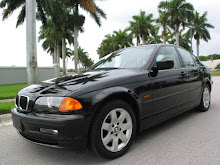
The Ford Mustang has played a large role in shaping American muscle car heritage since 1964, when it first rolled out of Dearborn, Michigan. From that time on the Mustang had gone through major changes in terms of styling and performance. Whether it had the tire-smoking power of the Cobra or the economical gas mileage of the V6, the Mustang always made a statement with every new model produced. One particular aspect of past and, now soon to be present, Mustangs was the ever-famous 5.0 litre V8.

The 2011 model Mustang GT will be powered by a revamped version of the old 5.0 litre V8 that was last used in the 90's model Mustang GTs. The new V8 will produce nearly 416bhp and 390 torque which are not small numbers by any calculation! Note: Ford has yet to release the 0 to 60 time. However, the real question on everyones mind is how the new Stang will stack up against its famed rival, the Chevrolet Camaro SS. In the past, the Mustang GT usually came up short in terms of overall performance but made up for it by sporting a fresher look and nicer interior. With the launch of the new Camaro, Chevrolet has truly produced one of the most attractive vehicles ever to be labeled American muscle. The SS packs one hell of a punch with its 426bhp V8 that is accompanied with nearly 400 pounds of torque.

Now in terms of horsepower, the two cars are not that far apart, however, when comparing the overall engine size, the Chevy may be in a league all of its own. The Camaro's V8 is a 6.2 litre which surpasses both Toyota's iForce V8 (5.7 litre) and Dodge's Hemi V8 (5.7 litre) that are found in there full-size pick-up trucks! Now some enthusiasts would say that given the small difference in horsepower, 10 to be exact, the cars will perform about the same. This may be true to some extent but you cannot tell me that the extra 1.2 litres found in the Chevy are simply left on the side of the road somewhere. You will truly feel that extra 1.2 litres when burning-out from traffic light to traffic light or showing your, ever-appreciating, neighbors how many doughnuts you can do on the street in front of your house. Maybe Ford has finally pushed hard enough to bring the new 2011 Mustang GT 5.0 up to the Camaros SS's level. However, isn't it nice to know that you have a few more litres on the Stang ready to race you to the next traffic light?
















